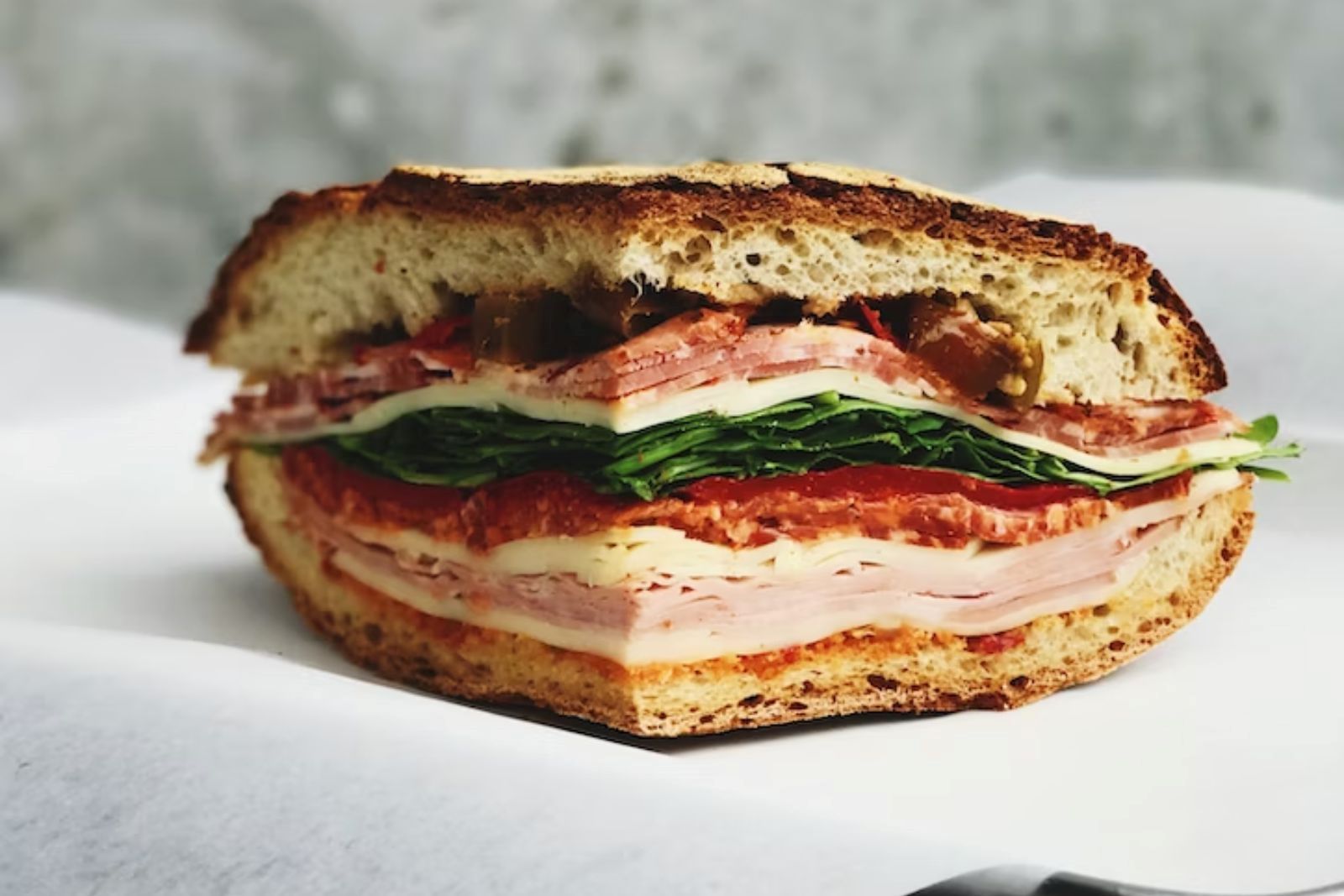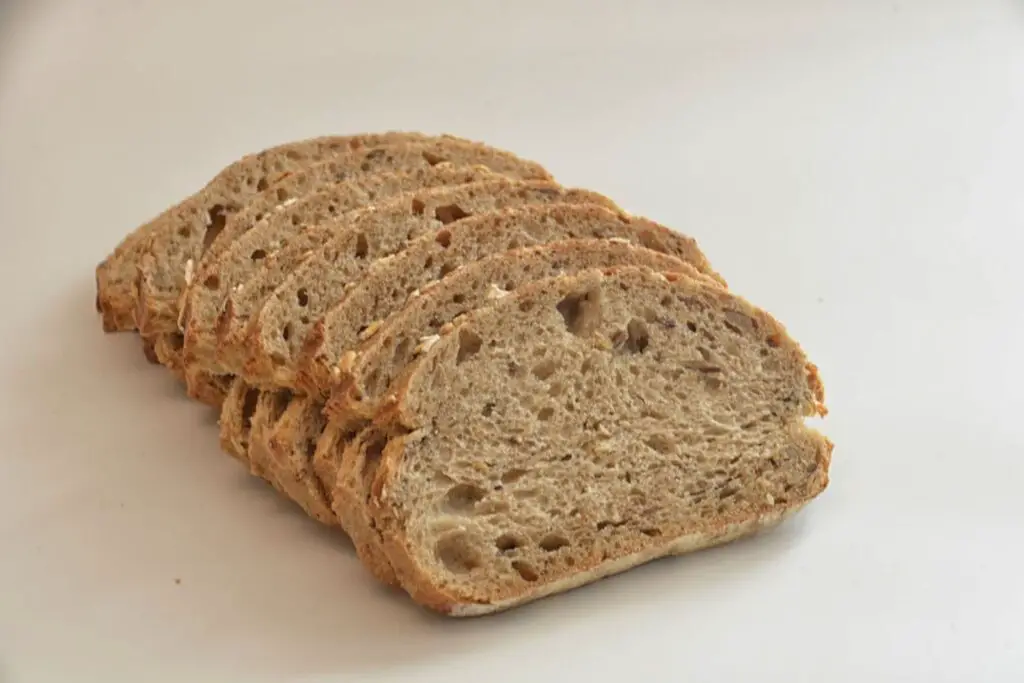
Sandwiches are a beloved and versatile meal option enjoyed by people of all ages. They offer endless possibilities for fillings, flavors, and textures. However, sometimes we find ourselves with more sandwiches than we can consume in a short period. That’s where freezing comes in. Freezing sandwiches allows you to extend their shelf life and have a quick, satisfying meal option readily available when you need it. In this guide, we will walk you through the process of freezing sandwiches, ensuring that they maintain their taste and quality for future enjoyment.
Here are the simple steps to freeze sandwiches:
Step 1: Choose the Right Bread
When it comes to freezing sandwiches, the type of bread you choose plays a crucial role in maintaining its quality and texture. Here’s why selecting the right bread is essential:
- Sturdiness: Opt for bread that is sturdy and can hold up well to freezing and thawing processes. Sturdier bread varieties tend to retain their shape and texture better when frozen. They are less likely to become soggy or fall apart when thawed, ensuring a satisfying sandwich experience.
- Low Moisture Content: A bread with relatively low moisture content is preferable for freezing. Moisture can lead to sogginess when the sandwich is thawed. By choosing bread with lower moisture, you can minimize the risk of a mushy sandwich.
- Recommended Bread Types: Whole wheat, rye, sourdough, and ciabatta bread are excellent choices for freezing sandwiches. These breads are known for their robust texture and lower moisture levels, making them well-suited for freezing. Their hearty nature helps them retain their structure and flavors even after being frozen.
- Avoid Soft or Delicate Bread: Bread varieties that are too soft or delicate, such as fluffy white bread or delicate rolls, are not ideal for freezing. These types of bread tend to become mushy or lose their texture when frozen and thawed. To ensure a satisfying eating experience, it’s best to steer clear of such bread options when freezing sandwiches.
By carefully considering the type of bread you choose, and focusing on sturdiness and low moisture content, you can ensure that your sandwiches maintain their integrity and taste even after being frozen and thawed. So, select the right bread to set a solid foundation for your frozen sandwiches.
Step 2: Prepare and Assemble
In the second step of freezing sandwiches, it’s time to prepare and assemble your desired fillings and condiments. Here’s why it’s important to consider certain ingredients and their freezing compatibility:
- Personalization: Prepare your sandwiches with the fillings and condiments of your choice. Whether it’s classic combinations like ham and cheese or creative variations, assembling the sandwich according to your taste preferences ensures a satisfying meal when it’s eventually consumed.
- Ingredient Considerations: While most sandwich ingredients can be frozen, some items, such as lettuce and tomatoes, do not fare well in the freezing process. Freezing causes these ingredients to become watery and limp, affecting the overall texture and taste of the sandwich.
- Freshness Preservation: To avoid the negative effects of freezing on delicate ingredients, it’s advisable to omit them from the sandwich assembly before freezing. By leaving out ingredients like lettuce and tomatoes, you ensure that they remain fresh and crisp when added just before enjoying the sandwich.
- Options for Adding Fresh Ingredients: When you’re ready to consume the frozen sandwich, you can easily add the omitted ingredients fresh. This step allows you to enjoy the full flavor and texture of these ingredients while maintaining the convenience of a pre-prepared sandwich.
By considering the freezing compatibility of certain ingredients and leaving them out during the assembly process, you can prevent issues like wilting or watery fillings. This thoughtful approach ensures that your frozen sandwich retains its quality and allows you to enjoy the desired freshness of specific ingredients when it’s time to indulge in your meal.
Can I freeze sandwiches with mayonnaise or other condiments?
Freezing sandwiches with mayonnaise or other condiments is generally not recommended. These condiments can undergo texture changes and may separate when thawed, leading to an undesirable consistency. To preserve the quality and taste of the sandwich, it’s advisable to exclude mayonnaise and similar condiments before freezing and add them fresh when ready to consume. Consider using alternative spreads or dressings that freeze well for a better freezing experience.
Can I freeze sandwiches with cheese or other dairy products?
Yes, sandwiches with cheese and other dairy products can be frozen. However, it’s important to note that freezing can affect the texture of cheese, potentially making it slightly crumbly or grainy upon thawing. Harder cheeses tend to freeze better than softer ones. To minimize texture changes, consider shredded or sliced cheese rather than creamy spreads when freezing sandwiches with cheese.
What are some recommended fillings or ingredients that freeze well in sandwiches?
Several fillings and ingredients freeze well in sandwiches, ensuring their quality is preserved during the freezing process. Some recommended options include deli meats such as turkey, ham, and roast beef, as well as cooked chicken or tuna. Other suitable fillings include hard cheeses, pickles, onions, and spreads like mustard or pesto. Avoid ingredients like lettuce, tomatoes, and delicate condiments, which are better added fresh after thawing.
Step 3: Wrap Properly
Freezing sandwiches involves the crucial task of properly wrapping them to ensure their quality is preserved. Here’s why proper wrapping is essential and how to go about it:
- Protection from Freezer Burn: Freezer burn occurs when the food surface is exposed to the cold air in the freezer, causing dehydration and oxidation. Proper wrapping acts as a barrier against freezer burn, safeguarding the taste and texture of your sandwiches.
- Individual Wrapping: Start by tightly wrapping each sandwich individually in plastic wrap. This step prevents air from reaching the sandwich, reducing the risk of freezer burn. Ensure that the plastic wrap is securely sealed around the sandwich to create an airtight seal.
- Eliminating Air Pockets: Air pockets within the wrapping can lead to freezer burn and negatively impact the quality of the sandwich. When wrapping, make sure to press out any excess air and eliminate any gaps or openings in the plastic wrap. This step creates a snug and protective layer around the sandwich.
- Double Protection with Freezer Bags: After individually wrapping the sandwiches, place them in a resealable freezer bag for an extra layer of protection. Before sealing the bag, squeeze out as much air as possible to minimize the chance of freezer burn. A vacuum-sealed bag can be an alternative option to further reduce air exposure.
Proper wrapping techniques create a sealed environment around each sandwich, preventing moisture loss and maintaining their taste and texture. This method significantly reduces the risk of freezer burn, ensuring that your sandwiches remain delicious and ready to enjoy even after an extended period in the freezer.
What is the recommended type of packaging for freezing sandwiches?
The recommended type of packaging for freezing sandwiches is individual plastic wrap or aluminum foil wrapping, followed by placing them in airtight freezer bags or containers. The plastic wrap or aluminum foil helps protect the sandwich from freezer burn and maintain its quality, while the airtight bags or containers provide further insulation and prevent odors from transferring. This combination of packaging materials ensures that the sandwiches stay fresh and retain their flavors during freezer storage.
Step 4: Label and Date
Freezing sandwiches, it’s important to label and date the freezer bags containing your sandwiches. Here’s why this simple step is crucial and how it helps in maintaining freshness and organization:
- Avoid Confusion: Labeling the freezer bags helps you avoid confusion when you have multiple types of sandwiches or different fillings. By clearly indicating the type of sandwich or fillings on each bag, you can easily identify and select the desired sandwich when it’s time to thaw and enjoy.
- Consume Oldest Sandwiches First: When you freeze sandwiches, it’s essential to practice the “first in, first out” principle. By dating the freezer bags, you have a clear reference of when each sandwich was frozen. This allows you to consume the oldest sandwiches first, ensuring they are enjoyed before newer ones. It helps prevent sandwiches from being forgotten and left in the freezer for extended periods, which can lead to a decline in quality.
- Inventory Management: Labeling and dating the freezer bags enables you to keep track of your sandwich inventory. You can easily see what types of sandwiches you have available and their freezing dates. This information helps you plan your meals and ensures that you utilize your frozen sandwich stash efficiently.
- Freshness Maintenance: By knowing the date of freezing, you can gauge how long the sandwiches have been in the freezer. This knowledge helps you maintain the freshness and quality of the sandwiches by ensuring they are consumed within a reasonable timeframe.
Using a permanent marker, write the necessary information, such as the sandwich type or fillings, and the date of freezing, on each freezer bag. This simple step provides organization, reduces confusion, and helps you prioritize consuming the oldest sandwiches first, ensuring that you enjoy your frozen sandwiches at their best.
Step 5: Freeze and Thaw
Explore the process of freezing and thawing sandwiches. Here’s why it’s important to follow proper freezing techniques and guidelines for optimal results:
- Freezing Process: After wrapping and labeling your sandwiches, it’s time to place them in the freezer. Lay the sandwiches flat in the freezer, ensuring they are not stacked or squeezed together. This arrangement allows for even freezing and prevents the sandwiches from becoming squished or losing their shape. Freezing the sandwiches flat also makes it easier to store and organize them.
- Preservation of Shape and Texture: By laying the sandwiches flat, you help maintain their shape and texture during the freezing process. Stacking or squeezing the sandwiches together may result in flattened or misshapen sandwiches, affecting their appearance and overall eating experience once thawed.
- Duration of Freezing: It’s recommended to consume frozen sandwiches within 1 to 3 months for the best quality. While sandwiches can remain safe to eat beyond this timeframe, their taste and texture may gradually deteriorate. To ensure the highest level of freshness, it’s ideal to enjoy your frozen sandwiches within this suggested timeframe.
- Thawing Process: When you’re ready to enjoy a frozen sandwich, it’s important to thaw it properly. The best method is to transfer the sandwich from the freezer to the refrigerator and let it thaw overnight. This gradual thawing process helps maintain the sandwich’s taste and texture, preventing it from becoming soggy.
- Alternative Thawing Options: If you’re in a hurry and need to thaw the sandwich more quickly, you can use the defrost setting on your microwave. However, exercise caution not to overheat the sandwich, as it can result in a soggy texture. Thawing in the refrigerator remains the recommended method for preserving the sandwich’s quality.
By following these freezing and thawing guidelines, you can ensure that your sandwiches retain their shape, texture, and taste. Proper freezing techniques and adherence to recommended consumption timeframes allow you to enjoy your frozen sandwiches at their best, providing a convenient and delicious meal option whenever you need it.
Are there any tips for reheating frozen sandwiches to ensure they taste fresh?
When reheating frozen sandwiches, there are several tips to help ensure they taste fresh and enjoyable. First, it is recommended to thaw the sandwich in the refrigerator overnight before reheating. To retain the desired texture, consider using an oven or toaster oven to reheat the sandwich instead of a microwave. Additionally, wrapping the sandwich in foil while reheating can help prevent it from becoming dry.
Other related questions
Can you refreeze sandwiches?
It is generally not recommended to refreeze sandwiches once they have been thawed. Refreezing can affect the quality and safety of the sandwiches, leading to potential texture changes and a higher risk of bacterial growth. It is best to thaw and consume sandwiches only once, ensuring freshness and minimizing food safety concerns.
How do I know if the sandwiches have gone bad after being frozen?
To determine if a frozen sandwich has gone bad, there are a few indicators to consider. Check for any signs of freezer burn, such as discoloration or dry spots on the bread. Additionally, inspect the sandwich for unusual odors or an off-putting smell. Lastly, if the texture or taste appears significantly altered or there are any signs of mold growth, discarding the sandwich to ensure food safety is best.
Can I freeze different types of sandwiches together?
Yes, you can freeze different types of sandwiches together. It’s important to individually wrap or package each sandwich before placing them together in a larger airtight container or freezer bag. This prevents them from sticking together and allows for easy separation when you want to retrieve a specific sandwich. Label the packaging with the contents and date for easy identification. Freezing different types of sandwiches together is a convenient way to have a variety of options available, and it allows you to grab a sandwich of your choice without thawing the entire batch.








